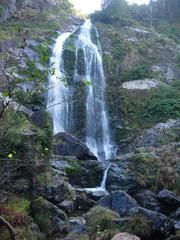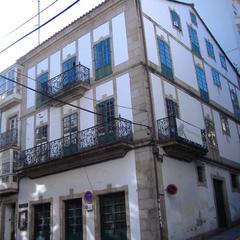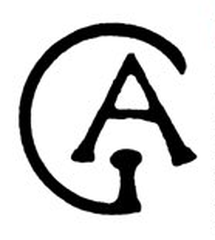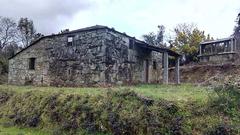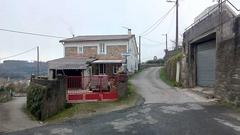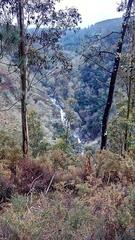The Royal Shipyard of Esteiro: Visiting Hours, Tickets, and Historical Significance in Ferrol, Spain
Date: 04/07/2025
Introduction
The Royal Shipyard of Esteiro (Reales Astilleros de Esteiro) in Ferrol, Spain, stands as a monumental symbol of the nation’s naval and industrial legacy. Founded in the 18th century under the guidance of King Ferdinand VI and the Marqués de la Ensenada, this shipyard catalyzed Ferrol’s transformation into Galicia’s first true industrial city and a strategic naval powerhouse. Over nearly three centuries, Esteiro has not only produced iconic warships—including Spain’s first steam- and iron-hulled vessels—but also fostered a vibrant working-class community and influenced urban planning, architecture, and culture across the region.
Today, Esteiro remains an active center for naval construction, operated by Navantia, where advanced technologies such as the “Digital Twin” system are driving Spain’s next generation of naval engineering. For visitors, the site offers a fascinating intersection of history, Enlightenment-era architecture, and modern innovation, complemented by accessible guided tours, exhibitions, and proximity to other key cultural sites in Ferrol.
Table of Contents
- Introduction
- Historical Background of the Royal Shipyard of Esteiro
- Architectural and Cultural Significance
- Modern Significance and Technological Innovation
- Visitor Information
- Nearby Attractions in Ferrol
- Cultural Context and Local Life
- Travel Tips for Visitors
- Visuals and Interactive Media
- Frequently Asked Questions (FAQs)
- Plan Your Visit and Explore Ferrol’s Maritime Heritage
- References
Historical Background of the Royal Shipyard of Esteiro
The Esteiro shipyard was established in the mid-18th century as part of Spain’s broader efforts to modernize its navy and consolidate maritime power. Located on the protected northwest slope of Monte Esteiro, the shipyard utilized the natural advantages of Ferrol’s deep harbor, allowing for the construction and maintenance of large warships. Its foundation marked Ferrol’s emergence as both a military stronghold and an industrial urban center, shaping the city’s physical layout and social fabric (Wikipedia; Visit Ferrol; Guías Viajar).
Throughout the 18th and 19th centuries, Esteiro gained renown for producing notable vessels—including the 112-gun Santa Ana and the steamship Isabel II—while weathering challenges such as the Napoleonic Wars and Spain’s loss of colonial territories. The shipyard’s influence extended beyond naval prowess: it triggered the development of distinct urban neighborhoods (Esteiro and A Magdalena), forged a robust industrial workforce, and fostered cultural traditions that endure to this day (alexgettinglost.com).
Architectural and Cultural Significance
Enlightenment Urbanism and the Birth of Esteiro
Commissioned in 1749, Esteiro was a flagship project of Enlightenment urbanism, blending rational, geometric planning with advanced engineering. The shipyard and adjacent neighborhoods were designed to maximize efficiency, security, and social organization, setting a benchmark for 18th-century industrial cities (Wikipedia; Visit Ferrol).
Industrial and Military Architecture
Key architectural elements include:
- The Armoury Building: Exemplifying Enlightenment military design, combining monumental scale and functional materials (Guías Viajar).
- Monumental Gate of the Dam (1789): A signature feature of Ferrol’s skyline, notable for its imposing size and decorative detail (Guías Viajar).
- Defensive Fortifications: Including the Cortina fortification, and the castles of San Felipe and La Palma, which protected the estuary.
Technological Innovation and Industrial Heritage
Esteiro was at the forefront of Spanish naval innovation. It launched the nation’s first steamship in 1858 and its first iron-hulled vessel in 1881, adapting to new technologies and expanding its workforce during periods of modernization (Visit Ferrol). The shipyard’s legacy is evident in Ferrol’s evolution as a center for both naval construction and industrial labor.
Modernist and Neoclassical Influences
The early 20th century saw Ferrol enriched with modernist architecture, notably through the work of Rodolfo Ucha, whose buildings, such as the Jofre Theater, complemented the city’s Enlightenment and neoclassical heritage (Guías Viajar).
UNESCO World Heritage Candidacy
In 2018, Ferrol’s shipyard, arsenal, and Enlightenment urban layout were submitted as a UNESCO World Heritage candidate under the theme “City of Ferrol: Port of the Enlightenment,” a testament to their global architectural and historical significance (Visit Ferrol).
Modern Significance and Technological Innovation
Now managed by Navantia, Esteiro remains a cutting-edge industrial and research hub. It leads the construction of the F110 frigates—next-generation warships integrating the “Digital Twin” system, cloud computing, machine learning, and advanced robotics (navantia.com.au; navalnews.com). The F110 program sustains thousands of jobs and underpins Spain’s naval export capacity. The site’s Innovation and Robotics Center further positions Ferrol at the forefront of global shipbuilding.
Visitor Information
Visiting Hours & Tickets
- Hours: Generally, guided tours are available Tuesday through Sunday, 10:00 AM to 6:00 PM, with closures on Mondays and major public holidays. Some seasonal variations apply, so always check with official sources.
- Tickets: General admission is typically €6–€8 for adults, with discounts for students, seniors, and groups. Children under 12 often enter free. Tickets are sold online via the official Ferrol tourism website or at the entrance, but advance booking is strongly recommended as access is often by guided tour only.
- Security Measures: As an operational naval facility, all visitors must bring valid ID and comply with safety protocols (Ferrol Municipal Tourism Office).
Guided Tours & Special Events
- Daily Tours: Available at set times (usually at 11:00 AM and 4:00 PM).
- Thematic Tours: Focus on naval engineering, Enlightenment urban planning, or shipbuilding technology.
- Special Events: Include Maritime Heritage Days, open houses, and collaborations with nearby research centers like CITENI.
Accessibility
- Wheelchair Accessibility: Ramps and elevators are fitted in key areas, though some historic structures may be difficult to access.
- Assistance: Visitors with special needs should notify tour organizers in advance for personalized support.
Nearby Attractions in Ferrol
Your visit to Esteiro can be complemented by exploring:
- Arsenal of Ferrol: A vast 18th-century naval complex adjacent to the shipyard.
- Fort San Felipe and Fort La Palma: Coastal fortifications with panoramic estuary views.
- Naval Museum of Ferrol: Displays regional maritime artifacts and models (alexgettinglost.com).
- Esteiro and La Magdalena Districts: Walkable neighborhoods rich in Enlightenment-era planning and worker history.
Cultural Context and Local Life
Ferrol’s identity is inseparable from its shipbuilding tradition. Local festivals such as Semana Santa, Luminarias de San Juan, and Noche de las Pepitas highlight the region’s maritime spirit (visitferrol.com). The Esteiro neighborhood, home to generations of shipyard workers, remains a hub for cultural festivities and authentic Galician cuisine.
Travel Tips for Visitors
- Best Time to Visit: Late spring through early autumn (May–September) offers mild weather and lively festivals (best-time.to).
- Language: Spanish and Galician are predominant; English tours are often available.
- Transport: The site is accessible by foot, local bus, or taxi from the city center. Ferrol is well-connected by rail and road to the rest of Galicia.
- What to Bring: Comfortable footwear for uneven surfaces and a camera for capturing historic and modern vistas.
Visuals and Interactive Media
Official tourism websites offer virtual tours, high-resolution galleries, and interactive maps. Enhance your visit by previewing the site online or using the Audiala app for curated audio guides and multimedia content.
Frequently Asked Questions (FAQs)
Q: What are the Royal Shipyard of Esteiro’s visiting hours?
A: Guided tours typically run Tuesday–Sunday, 10:00 AM–6:00 PM, but always check ahead for seasonal changes and special open days.
Q: How do I buy tickets?
A: Tickets can be purchased online through official tourism websites or at the visitor center. Advance booking is advised.
Q: Are guided tours available in English?
A: Yes, tours are often available in English, Spanish, and Galician.
Q: Is the site accessible for people with disabilities?
A: Key areas feature ramps and elevators; some historic sections may be less accessible. Notify organizers of specific needs when booking.
Q: Can I take photos?
A: Photography is permitted in designated areas. Drones or professional equipment may require prior authorization.
Plan Your Visit and Explore Ferrol’s Maritime Heritage
A visit to the Royal Shipyard of Esteiro offers a unique immersion into centuries of Spanish naval history, Enlightenment architecture, and ongoing technological innovation. Combine your tour with nearby attractions and local festivities to experience the full breadth of Ferrol’s maritime legacy.
For up-to-date information on visiting hours, tickets, and tours, consult the official Ferrol tourism website or the Ferrol Municipal Tourism Office. Enhance your experience with the Audiala app, and follow social media for news on events and special programs.
References
- Wikipedia – Reales Astilleros de Esteiro
- Visit Ferrol – Ferrol de la Ilustración
- Guías Viajar – Galicia Ferrol Arsenal Shipyards
- Navantia – F110 Frigate Construction
- Naval News – F110 Program
- Alex Getting Lost – Exploring Ferrol
- Ferrol Turismo Official Website
- Ferrol Municipal Tourism Office
For a truly enriching experience, plan ahead, leverage digital resources, and immerse yourself in the unique blend of history and innovation that defines the Royal Shipyard of Esteiro and the city of Ferrol.
